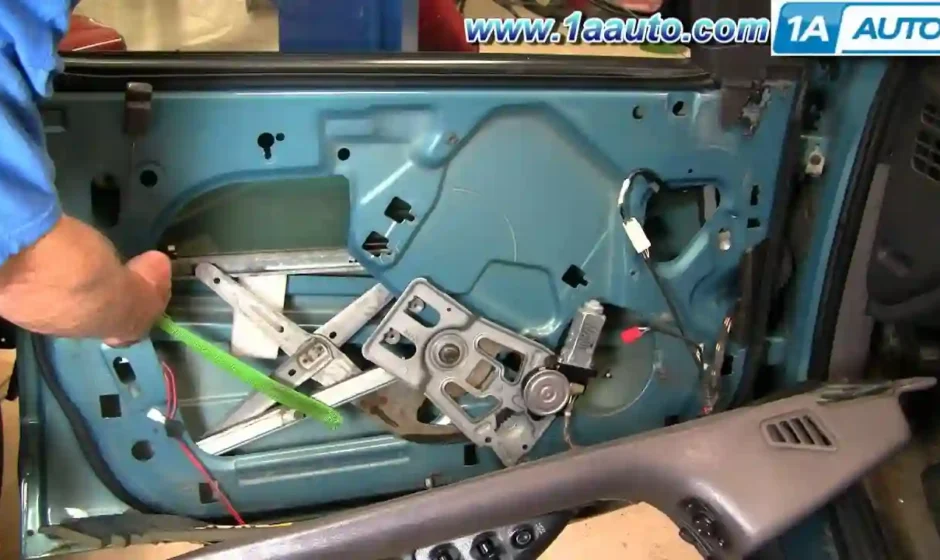Owning an older vehicle can be a rewarding experience, but it also comes with its fair share of maintenance challenges. As vehicles age, various components may require replacement, and the window regulator is no exception. The window regulator is responsible for the smooth operation of your car’s windows, allowing you to roll them up and down effortlessly. Over time, wear and tear can take a toll on this crucial component, necessitating replacement. In this article, we’ll explore what you can expect when it comes to window regulator replacement for older vehicles.
Understanding the Window Regulator:
Before delving into the replacement process, let’s take a moment to understand what a window regulator is and how it works. A window regulator is a mechanical or electrical device that controls the movement of your car’s windows. It consists of various components, including cables, pulleys, and an electric motor (in the case of power windows). When you press the window switch, the window regulator engages and moves the window glass up or down along its track.
Why Window Regulators Fail in Older Vehicles:
Window regulators are subject to wear and tear over time, and several factors can contribute to their failure in older vehicles:
- Material Degradation: The materials used in window regulator components, such as plastic and metal parts, can degrade over time due to exposure to the elements and repeated use. This degradation can result in weakened or brittle components that are more prone to breaking.
- Lack of Lubrication: Proper lubrication is essential to ensure the smooth operation of the window regulator. Over time, lubricants may dry up or become insufficient, leading to increased friction and wear within the mechanism.
- Electrical Issues: In the case of power windows, electrical components can deteriorate with age, leading to problems with the window motor or switches. Electrical connections may corrode, and wiring may become brittle.
- Environmental Factors: Exposure to extreme temperatures, moisture, and dust can contribute to the deterioration of window regulator components. Rust and corrosion can affect metal parts, while moisture infiltration can damage electrical components.
- Mechanical Wear: Repeatedly rolling the windows up and down can cause mechanical wear on the regulator’s moving parts. Over time, this wear can lead to diminished performance and eventual failure.
What to Expect During Window Regulator Replacement:
Replacing a window regulator in an older vehicle is a task that may become necessary to restore the functionality of your windows. Here’s what you can expect during the replacement process:
1. Diagnosis:
The first step in addressing a window regulator issue in an older vehicle is diagnosing the problem. If you’re experiencing issues with one or more windows, such as slow or jerky movement, unusual noises, or complete failure to operate, you’ll need to identify the source of the problem. Diagnosis often involves inspecting the window regulator and related components, checking for loose connections, and testing the electrical system (in the case of power windows).
2. Sourcing Replacement Parts:
Once you’ve identified the issue and determined that the window regulator requires replacement, you’ll need to source the appropriate replacement parts. For older vehicles, finding the exact replacement regulator can be a challenge, especially if the vehicle is no longer in production. In such cases, you may need to explore aftermarket options or salvage yards to find compatible regulators.
3. Tools and Equipment:
Before you begin the replacement process, gather the necessary tools and equipment, including screwdrivers, wrenches, socket sets, trim removal tools, and a multimeter or voltage tester (for power windows). Having the right tools on hand will make the replacement process smoother.
4. Door Panel Removal:
Access to the window regulator is gained by removing the inner door panel. This step is necessary to reach the regulator and related components. Removing the door panel involves carefully prying off any trim pieces or covers covering screws or fasteners, using trim removal tools to gently detach the clips holding the door panel in place, and unscrewing any visible screws securing the door panel to the door frame.
5. Disconnecting Electrical Connections:
If your vehicle has power windows, you’ll need to disconnect the electrical connections related to the window regulator and switches. This includes unplugging the window motor and switch connections. Use a multimeter or voltage tester to ensure that there is no electrical current running through the connections.
6. Removing the Old Regulator:
With the electrical connections disconnected, you can access and remove the old window regulator. The exact process may vary depending on your vehicle’s make and model, but it typically involves locating and removing any bolts or screws securing the regulator to the window glass and door frame, carefully detaching the regulator from the window glass and track, and sliding or maneuvering the old regulator out of the door frame.
7. Installing the New Window Regulator:
Now that you’ve removed the old regulator, it’s time to install the new one. Follow these steps for a successful installation:
- Carefully slide the new regulator into the door frame.
- Align it with the window glass and secure it in place using the appropriate bolts or screws.
- Ensure that the regulator is properly positioned and that it moves freely without obstruction.
- Reconnect any electrical connections, including the window motor and switch connections.
8. Testing the Window Regulator:
Before reassembling the door panel, it’s essential to test the new window regulator to ensure that it operates smoothly and without issues. Reconnect the car’s battery and use the window switch to raise and lower the window. Pay attention to any unusual noises, jerky movements, or other problems. If you encounter issues, address them before proceeding.
9. Reassembling the Inner Door Panel:
With the window regulator functioning correctly, it’s time to reassemble the inner door panel. Follow these steps:
- Align the door panel with the door frame and ensure that all electrical connections are properly attached.
- Carefully push the door panel back into place, making sure that any clips or fasteners engage securely.
- Screw in any bolts or screws that were removed during the door panel removal process.
- Reattach any trim pieces or covers that were removed earlier.
10. Final Testing and Inspection:
After reassembling the door panel and reconnecting the battery, test the window regulator one more time to ensure that it operates smoothly and without any issues. Make any necessary adjustments or repairs if you encounter problems. Perform a final inspection of the window regulator, door panel, and surrounding areas to ensure everything is in order.
Considerations for Older Vehicles:
When dealing with window regulator replacement for older vehicles, there are some additional considerations to keep in mind:
- Compatibility: Finding the right replacement regulator for an older vehicle can be challenging, especially if it’s no longer in production. Consult with automotive experts or consider aftermarket options if necessary.
- Wiring and Electrical Components: Older vehicles may have outdated wiring and electrical components. Be prepared to address any electrical issues that may arise during the replacement process.
- Material Quality: Consider the quality of materials used in the replacement regulator. Opt for high-quality parts to ensure longevity and reliability.
- Professional Assistance: If you’re uncomfortable with any aspect of the replacement process or if you encounter unexpected difficulties, it’s advisable to seek professional assistance from an experienced mechanic or auto technician.
In conclusion, window regulator replacement for older vehicles is a task that may become necessary to maintain the functionality of your car’s windows. While the process may involve some challenges, such as sourcing compatible parts, it is achievable with the right approach and preparation. By following the steps outlined above and considering the unique factors associated with older vehicles, you can successfully replace the window regulator and ensure smooth window operation for your beloved classic or older car.



